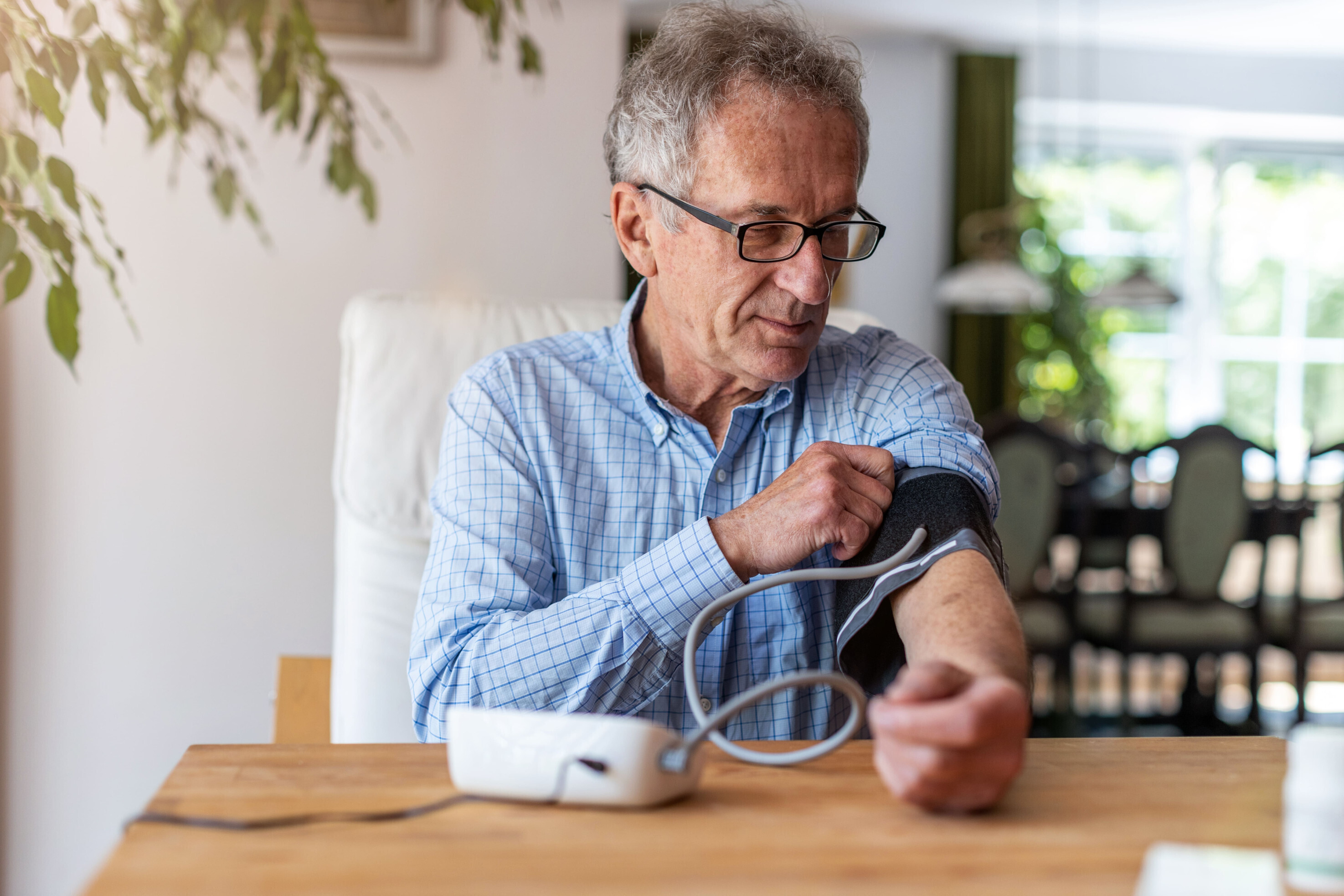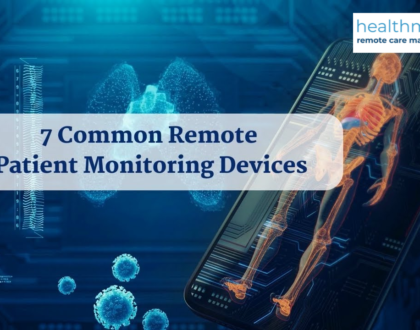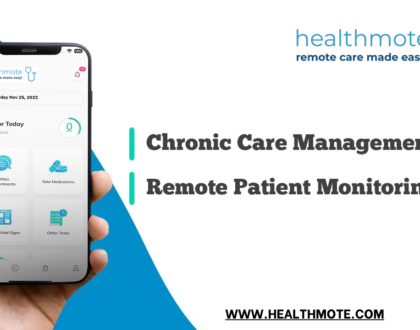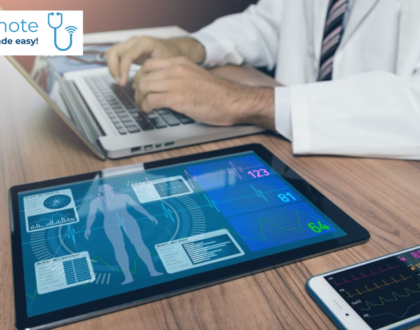
Unpacking the Remote Monitoring Revolution
High Blood Pressure, the next health crisis:
One of the most prevalent cardiovascular diseases is Hypertension, or high blood pressure (HBP), a chronic health condition that can be simply defined as a sustained increase in arterial blood pressure (BP) where systolic blood pressure is more than 130-140 mm Hg and diastolic pressure is more than 85-90 mm Hg. Hypertension can lead to an increased incidence of renal failure, coronary heart disease, cardiac failure & even stroke. Based on the level of BP, hypertension can be classified into 4 types: Borderline; Mild diastolic; Moderate diastolic & Severe diastolic. Unfortunately, the cause of HBP in the most common type: “Essential/Primary” hypertension, is not definitely known. Meanwhile, a small subset of adults can have secondary hypertension, which means that there is an underlying but possibly correctable cause such as a hormone imbalance or kidney disorder.
Typical Pharmaceutical Intervention is now supplemented by Remote Monitoring
Making a few lifestyle changes can make a difference in blood pressure, for the management of Hypertension, mostly anti-hypertensive medications are prescribed like: diuretics, peripherally acting agents, vaso-dilators, Beta2 Adrenoceptor blockers, Centrally acting agents, Angio-tensive converting enzyme inhibitors, Angio-tensive receptor blockers & Ca++ Channel blockers. The dosage of these medications, the frequency of their dosages, etc. all ultimately rest on the monitoring of the blood pressure measurements.
Frequent blood pressure monitoring is a highly effective approach to controlling hypertension. Despite the benefits, patients are often non-compliant with checking, logging and relaying their home bp results. One recent innovation has alleviated much of the burden patients have been challenged with. Remote patient monitoring enables automatic transmission of home blood pressure results to an online portal. The results are shared with physicians to provide a rich data set which includes: systolic/ diastolic measurements, heart rate and potentially irregular heart rhythm patterns. Furthermore, patients are connected to a clinician that contacts them monthly to encourage compliance to the program, better health habits and adherence to their physician’s care plan.
While a remote patient monitoring program can be managed by a physician’s practice, the most frequent approach is to outsource the service to a care management company that specializes in remote engagement. Healthmote is one such company. They provide easy-to-use cellular devices, and they are staffed by a powerful team of “care coaches” that review results, motivate patients and escalate emergent concerns to physicians. We no longer need to wait for days or weeks for an office visit to check the patient’s vitals. This is especially true if the patient can be educated to self-monitor their BP and/or recognize any clinical symptoms or red flags that result in a trip to the ER. Now remote patient monitoring tools are available to electronically monitor the blood pressure and transmit it to the clinician without a hospital visit. This is where Healthmote remote devices and telehealth care management comes in. Their services help “activate” the patient to become a compliant partner in managing their high blood pressure.
How Telehealth and RPM help in the management of Hypertension:
Hypertension treatment typically involves changes to the care plan including: a medication regimen, dietary changes and frequent exercise. Telehealth and other RPM tools like the one Healthmote provides, supplement these care plan changes by providing all of the vitals collected from home via the remote connected devices. Each patient that is “connected” to the RPM program is paired with a clinician that engages with the patient through monthly phone calls designed with the sole purpose of reinforcing the healthy habits needed to improve the patient’s health status. Both RPM interventions have become the new standard of care for many hypertensive patients upon hospital discharge. Before a patient leaves the in-patient setting, providers brief their patients about symptom management: with information on symptoms to watch out for in the following days or weeks, and what action to take. With telehealth, healthcare providers can continue monitoring the patient’s condition with daily surveys for symptoms like severe headaches, nosebleeds, fatigue or confusion, blurry vision, chest pain, breathing difficulty, arrhythmia, blood in urine, pounding in chest, neck, or ears, etc. . The result of this proactive oversight has been a reduction in avoidable readmissions and hospital bed days.
Remote Patient Monitoring & Blood Pressure Monitoring:
Geriatric patients face an increased risk of suffering from high blood pressure. The advancement of age coupled with rising stress puts many patients at even greater risk. If left untreated, further complications may occur, including: chronic critical illnesses such as kidney damage, stroke, heart failure, and heart attack. Hospital admissions and readmissions are also very common among older hypertensive patients above the age of 65 years.
Remote Monitoring Requires Patient Education:
Patient education plays a key role in reducing avoidable admissions of hypertension patients. Effective delivery of patient education via telehealth strengthens the delivery of remote patient monitoring (RPM) as an intervention. Telehealth coupled with RPM allows for frequent assessment and reminder to patients to assess their bp daily and stick to the care plan.
Compliance is Key:
Patient adherence is a key factor in effective medical treatment of any disease but especially so in chronic ailments like blood pressure, and diabetes. Patient’s must be “Activated” to engage in their own care. The monthly calls to patients are designed to educate patients about their disease and how to manage a healthy lifestyle. While physicians have always engaged their patients in the office, the outreach to patients by specialized vendors is fairly new. Care management companies like Healthmote extend patient care beyond the local office to the patient’s home without requiring the practice to hire additional staff.
Promoting Patient Self-Management
“You and your doctor are partners,”says the American Heart Association (AHA). As one half of that partnership, patients play an important role in monitoring and managing their own symptoms. Besides listening to their physician’s advice, patients should also keep themselves informed and practice lifestyle changes that are beneficial for their condition as a part of blood pressure patient education, like quitting smoking, regaining and maintaining a healthy body weight, keeping up a regular, safe exercise regime, eating a healthy diet, keeping an eye on cholesterol and blood sugar, managing stress, etc.
RPM Enables Better Outcomes
Telehealth and RPM provide a direct line of communication between healthcare practitioners and their patients, thereby enhancing patient care. All the components of the organization’s telehealth strategy are coordinated to work together to help hypertensive patients achieve their health goals. This includes changes made to their diet to help lower their blood pressure and improve their overall health. It also includes suggestions of what exercises and physical activity are needed to keep a healthy heart. Patients can use cellular RPM devices to automatically log their vitals. Similarly, a cellular weighing scale can track their weight and data transmitted automatically can help healthcare providers monitor the weight loss progress since most of these patients are also overweight and are at greater risk of cardiovascular disease.
Non-adherence to a strict medication regime is the primary reason for 25% of the hospitalizations every year. Remote patient monitoring (RPM) programs that include clinical interaction with the care team improved outcomes. Typically, the clinical team assigned to the high-risk, RPM patients will monitor medication adherence, and health habits via telephone calls. All this can be done directly to the patient’s remote monitoring technology. Telehealth and RPM have thus been proven to be effective education delivery systems for patients with hypertension.
Management of Postpartum Hypertensive Patients:
A special mention is made here for certain types of hypertensions, e.g. postpartum hypertension. In the postpartum healing stage, it’s important that healthcare is continuously accessible, without any undue stress to the patients. Remote patient monitoring (RPM) can be a valuable tool for such patients who struggle to make in-person appointments with their medical team due to the responsibilities of trying to cope with the newborn while still healing from birth. Maximum benefits are reaped by such postpartum patients with high blood through RPM.
Conclusion:
With Telehealth and Remote blood pressure monitoring, physicians no longer need to wait for the next in-person appointment to assess and engage their high-risk patients. With effective RPM programs, patients are more likely to adhere to the recommended guidelines for measuring blood pressure, receiving more optimum medication adjustments & thus get the timely help they need. If clinical practitioners embrace this convenient, practical tool of RPM and telehealth, it is invaluable for those chronically critical patients with hypertension. It’s essential to make it as easy as possible for any such patient to be able to track their health and communicate with their provider. RPM is a feasible way to improve adherence to BP monitoring and may improve evaluation and management of patients.

 Linkedin
Linkedin

